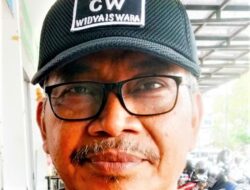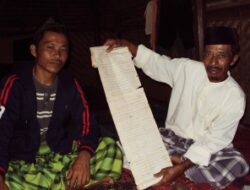DEVELOPING BEKAYAT CREATIVELY IN THE ERA OF DIGITALIZATION
There are problems with the creative to developing of Bekayat into a digital program
lombokjournal.com ~

Student of Master Program in English Language Education Mandalika University of Education, Mataram
INTRODUCTION
The Bekayat tradition as one of the oral literature that still exists in the Sasak Islamic community of Lombok is currently in the challenge of a real era. On the one hand, this tradition has an important role as a medium for learning about morality, the goodness of life, and how to make society take a part in a social interaction.
But on the other hand, with the advancement of information technology where it is marked by the practice of digitizing in almost all activities, In fact, besides being one of the historical artifacts, the content in the text of the bekayat story, according to Made Suyasa (2019) can still be exemplified by millennials today.
That is why real steps are needed to be able to revitalize the bekayat tradition by developing creativity by utilizing digital technology so that the bekayat tradition can still show its existence in the midst of the currents of globalization and modernization.
DISCUSSION
If we are on the island of Lombok, especially at the celebration of Isra’ Mi’raj Nabi, Maulid Nabi, circumcision, marriage or death, it is not uncommon for us to hear the voices of several people taking turns filling the night air after Isya prayers.
The men performed the recitation of the hikayat (verse) by chanting then followed by alternating translation and interpretation by the main reader called as hadi and the supporting reader called as saruf as well as the translator called as bujangge who with his skill translated and deciphered the story read from various Islamic Books into Sasak language.
The reading activity which is well known as an oral tradition by the Sasak Islamic community is called Bekayat.
BACA JUGA: Lombok akan Jadi Kiblat POacuan Kuda Nasional
The Sasak Islamic community has been familiar with the tradition of Bekayat or ‘reading hikayat’ since the Hindu-Buddhist kingdom ruled Lombok. Then in its historical movement, Sasak Muslims are more familiar with the tradition of reading this saga in the term nyaer. The term nyaer denotes a reading pattern that uses tembang and is similar to the old Malay literary verse model. In terms of reading objects.
Bekayat as one of the surviving forms of oral literature among the Sasak Islamic community was once used to broadcast Islam. Therefore, it is not surprising that the books used in this tradition are in the form of books that contain and tell about the spiritual journey of the Prophet Muhammad SAW, death treatises, to the history of Islamic travel to enter the archipelago (especially Lombok).
If we look at the series of Bekayat activities which include the procession, time, and place of implementation, Bekayat activities, as described by Saharudin (2012), will do require complex and long preparations. The aforementioned series are as follows:
- Bekayat Procession
The flow or sequence of the bekayat procession in the implementation of the kayat reading is not carried out individually, but in groups (gathering the community). Starting from teenagers and parents by first holding a notice or in Sasak language known as “pesilaq”, either through loudspeakers as well as through direct invitations to their respective homes. It shows what people do is always based on togetherness.
As for the personnel, before the speech of the bekayat event began, the bekayat expert was invited a few days earlier. The bekayat expert asks what event is carried out by the inviter, meaning that he can prepare the bekayat material to be delivered, and adjusted to what will be planned.
The process of the bekayat ritual itself is bekayat which is carried out after the core event of the celebration is completed. So, this bekayat is the culmination of the end of the celebration event, or the closing event of the celebration. If it is to hold a seven-monthly pregnancy, nine-day death of a person or nyiwaq or shaving on baby traditional ceremony or aqiqah-an then this bekayat is held after the core event of the event procession and is carried out in the evening.
As for those related to the celebration of Islamic holidays, in particular Isra’ Mi’raj and Maulud are usually held after the lecture at the mosque or mushalla is over.
- The Event-Time of Bekayat
Bekayat is always done at night, that is, after isya prayers. This is because after the Isya’ prayer the time is long/loose compared to the Magrib prayer. In addition, bekayat is carried out at night because it is believed to bring tranquility to people who read and listen to it, so it is believed that it can open the door of the heart and hidayah for them to immediately repent and ask for mercy to God Almighty.
In the context of the early spread of Islam in Lombok, this is certainly very relevant to the condition of Sasak people at that time who often drank tuak (old nira) or berem (mixed glutinous rice water— in the Sasak term called poteng— which was stored for long time) at the moment after Isya’s time to get drunk. If in the last time people closed their celebration, with perebak jangkih followed by the puppetry performance overnight. As time went by Perebak Jangkih event was replaced with Bekayat.
- The Event Location of Bekayat
The place where Bekayat is carried out is adjusted to the type of event. If a prayer is held for a woman who commemorates seven months of pregnancy, the death of a person or aqiqah-an then it is usually held in a house as the place celebrate it..
The meaning to believe is that the house will be given a blesing for all residents of the house and for someone who is intended to get salvation from this process.
Meanwhile, if this bekayat is carried out on the commemoration of Islamic holidays, such as Isra’ Mi’raj and Maulid Nabi, it is held in a mosque or mushalla which functions as a center for proselytizing.
Seeing and understanding 3 things in the implementation of Bekayat as mentioned above, of course, the role of technology becomes very necessary so that Bekayat is not abandoned by the community in the future.
This is because the values conceived by Bekayat are still very relevant, which are needed to be a medium for expressing moral values in society.
BACA JUGA: Pola Pikir Jadi Kunci Sukses, Bagaimana Mengubahnya?
In today’s digital era, it is possible develop Bekayat as one of oral traditions to be more creative and innovative. Bekayat becomes more acceptable and develops more widely through the internet or cyberspace.
This gave rise to a new era of the presence of Bekayat as an internet oral tradition. Bekayat, which was originally developed and known limited in its distribution, then become an activity widely known by public.

With digital technology, the development and preservation of Bekayat oral traditions can be realized more creatively. In the digital era, Bekayat activities are no longer an offline event, but can be an online event that reaches a wider audience.
CONCLUSION
There are problems with the creative development of Bekayat into a digital program. Bekayat as it has been discussed above is a tradition that involves many elements in it. This Bekayat certainly contains a lot of cultural messages to provide knowledge for the next generations. Based on this idea, the role and existence of Bekayat should be conducted seriously, because Bekayat contains messages containing the noble values of society. When Bekayat becomes a digitized activity, it is necessary to choose a digital platform concerning the characteristics of Bekayat activities.
Bekayat as an oral tradition if it does not follow the digital change and remains in its original condition, it will slowly disappear and be forgotten. Therefore, digitizing the entire series of Bekayat activities will make it easier for many people to know how important the significant role of Bekayat is.
Therefore, it is urgently needed intervention and support from various parties (especially the government and other cultural stakeholders) in caring for and facilitating the survival of Bekayat ***